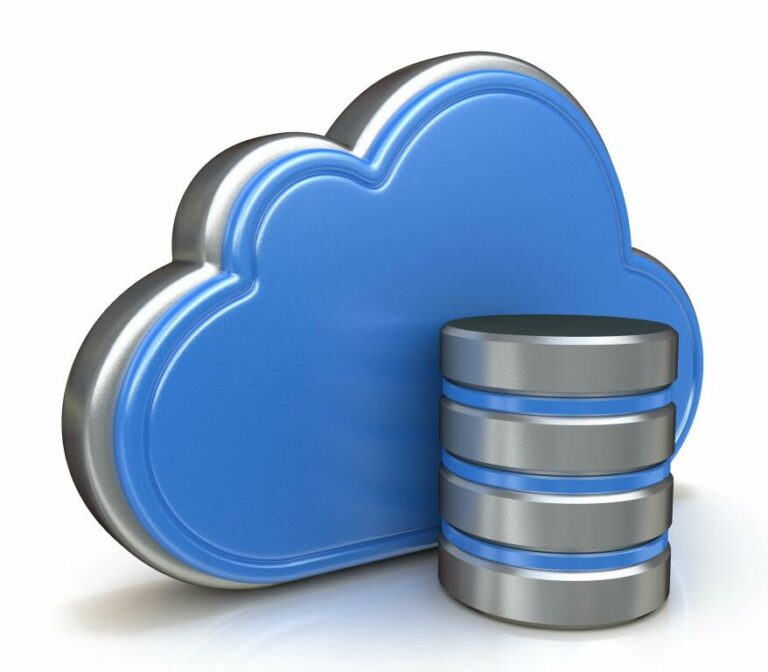Elasticity And Scalability In Cloud Computing By Maroti Chamalwad
Elastic computing or Elasticity implies a cloud service provider’s capacity to quickly scale up and down the utilization of assets such as storage, infrastructure, computing power, and so on. Scalability, however, refers to a system’s, network’s, or process’s capability to deal with rising amounts of labor or to be expanded in quite so much of methods. A scalable system may be scaled up by increasing processing energy, storage capacity, and bandwidth. AI and machine learning are expected to enhance predictive analysis of demand patterns and fine-tune the allocation of sources. This can improve each the scalability and elasticity of cloud computing methods, resulting in more environment friendly useful resource utilization. Serverless computing allows businesses to run purposes with out managing the underlying infrastructure, enhancing scalability and elasticity.

Choosing scalability suits companies with steadily rising workloads, making it attainable to anticipate and prepare for future demands. If your organization experiences predictable increases in data or consumer visitors, scalability ensures you’ll be able to increase your capability in a planned method, avoiding sudden crunches or performance points. When we speak about scalability, we’re talking about the ability of your cloud services to grow with you.
Most businesses endure cyclical fluctuations in demand, creating a significant impression on IT useful resource wants. Black Friday, for instance, is an example of a dramatic spike in usage that requires pre-planning. This preparation requires the strategic administration of computing resources, together with the scaling up of server capabilities and bandwidth. Cloud elasticity refers to the ability of a cloud-based computing surroundings to dynamically allocate and de-allocate sources on demand. This “on-the-fly” functionality permits for the efficient administration of sudden peaks and lows in computing demand. The cloud-based Hadoop structure at Netflix is considerably completely different from the data-center ones.
Free Aws Solution Architect Beginners Masterclass
Understanding these components is crucial for determining the most applicable strategy to useful resource management. If you wish to improve your cloud computing expertise further, we’d extremely recommend you to check https://www.globalcloudteam.com/ Simplilearn’s Post Graduate Program in Cloud Computing. This program, in collaboration with Caltech CTME, may help you hone the right cloud computing expertise and make you job-ready very quickly. Scalability is a way used to handle a spike in demand when organizations wanted.

Elasticity is the flexibility of a system to increase (or decrease) its compute, storage, netowrking, etc. capacity based mostly on specified standards similar to the entire load on the system. Long-term strategy aligns along with your group’s progress plans, and a mix of both approaches may be the simplest solution. We shall go into the intricacies of these two ideas on this blog, explaining their distinctions and analyzing their distinct functions in cloud computing. We’ll examine practical cases, go over when to use every one over the other, and provide recommendation on the means to accomplish both at the same time. Scalability and elasticity are distinctive, yet equally necessary elements of cloud architecture administration. Elasticity ensures efficient catastrophe recovery planning for scalability and flexibility.
Long-term strategy can be a factor, with elasticity offering more scalability potential in the lengthy run. Infrastructure complexity is another issue, with scalability requiring more manual intervention and planning, while elasticity is more automated and simplifies administration. Response time requirements are additionally important, with elasticity enabling computerized scaling in real-time for rapid scaling. Fully harnessing elasticity’s potential requires implementing predictive analytics and advanced monitoring to auto-scale resources. Microsoft Azure’s Autoscale for automated useful resource adjustments and AWS Lambda for serverless computing are examples of tools to assist with this. Google’s cloud researchers lately found that many corporations with on-premises environments waste as a lot as two-thirds of their put in capacities, losing cash and obtainable computing sources.
Scalability is deliberate, persistent, and greatest meets predictable, longer-term growth and the flexibility to extend workloads. You can scale up a platform or architecture to increase the performance of a person server. Wrike’s real-time reporting and analytics provide you with an immediate overview of your project’s standing, permitting for fast adjustments to assets and priorities based on current calls for. This elasticity ensures that your team can reply to adjustments swiftly, maintaining high efficiency and meeting deadlines, even when going through surprising challenges. Elasticity, however, refers to the capability of a system to routinely scale its assets up or down in response to altering demand. An elastic system is prepared to routinely modify its capability to match the present workload, with none handbook intervention.
Understanding Workload
Elasticity refers to a system’s capability to automatically or dynamically scale sources up and down. Elastic systems can adapt to workload changes by mechanically provisioning and de-provisioning assets in real-time. This is especially necessary in cloud service environments corresponding to Google Cloud, the place resources could be scaled across a quantity of servers with none physical service interruption. To put together for unpredictable workload demands, cloud computing-reliant businesses must undertake a twin strategy to utilize scalability and elasticity.
Agbaje Feyisayo is a dynamic content material advertising expert boasting over 10 years of experience in product advertising. Her journey has seen her delve into numerous industries, honing her expertise in creating partaking and compelling advertising content material difference between scalability and elasticity in cloud computing throughout the web. This suggestions highlights the elasticity of Wrike in action, showcasing the means it adeptly supports the swift workflow important to a company’s success. It’s not just about having the technology; it’s about orchestrating it neatly.
In the earlier days, administrators would buy a brand new server and get rid of the old one to attain vertical scaling. However, now cloud architects can achieve vertical scaling in AWS and Azure by altering occasion sizes. Both AWS and Azure supply quite so much of occasion sizes, allowing for vertical scaling in cloud computing for EC2 cases and RDS databases. ● Diagonal scaling — As the name hints, diagonal scaling is a mix of vertical and horizontal scaling. Organizations can grow vertically till they hit the server’s restrict, and then clone the server to add extra sources as wanted.
Typically, it’s something that occurs routinely and in real time, so it’s usually known as rapid elasticity. In the National Institute of Standards and Technology (NIST) formal definition of cloud computing, rapid elasticity is cited as a vital component of any cloud. Elasticity is used to explain how nicely your structure can adapt to workload in actual time. For example, if you had one user logon each hour to your web site, you then’d really solely want one server to handle this. However, if all of a sudden, 50,000 users all logged on without delay, can your structure shortly (and possibly automatically) provision new web servers on the fly to deal with this load? Workload predictability is more appropriate for highly variable workloads requiring real-time adjustments, while scalability is suitable for predictable patterns and planning.
Scalability Vs Elasticity
It’s additionally potential to underneath provision and suffer outages from having too little capacity for the workload. For these reasons, and others, elastic cloud techniques are the best match for some companies. In this type of scalability, digital machines are spun up as needed to create new nodes that run containerized microservices. Think of it as including the identical type of providers already working to spread out the workload and preserve high performance. The subsequent wave in scalability will rework how we take into consideration growing our digital capabilities. Hyper-scalability leans on the shoulders of distributed architectures that spread duties efficiently, squeezing every little bit of juice out of obtainable assets.

This essential facet of cloud computing allows for the handling of expanding workloads in a cost-effective and environment friendly manner. Horizontal scaling – Horizontal scaling, also called scale-out, refers to the capacity to mechanically add systems/instances in a distributed approach to handle a rise in load. An enhance in load could be represented by an increase within the number of periods to a web software. Horizontal scaling enhances both performance and general dependability by dispersing these cases across Availability Zones. Another important facet of scalability within the cloud is that it allows businesses to expand their operations rapidly.
Future Tendencies In Scalability And Elasticity
Cloud elasticity is required for short-term bursts, such as a spike in web site site visitors on account of a sales promotion. Cloud scalability, however, is for long-term progress that is strategically deliberate. To harness the true power of cloud computing, it’s essential to know what Scalability and Elasticity mean and the way they differ from one another.
- Serverless computing allows businesses to run applications with out managing the underlying infrastructure, enhancing scalability and elasticity.
- Scalability steps in to make certain that the applying can deal with a major increase in person visitors, say during a promotional campaign—the infrastructure scales to accommodate the increased load.
- This is very necessary in cloud service environments such as Google Cloud, the place assets can be scaled throughout a number of servers without any physical service interruption.
- If your present architecture can shortly and automatically provision new internet servers to deal with this load, your design is elastic.
- Elasticity, then again, refers back to the capacity of a system to automatically scale its sources up or down in response to changing demand.
By clicking “Post Your Answer”, you conform to our terms of service and acknowledge you might have learn our privateness policy. Find centralized, trusted content and collaborate around the technologies you employ most. Diane Eunice Narciso is a content marketer, strategist, and author who’s skilled and keen about marketing, social media, eCommerce, etc. And is also an expert in gross sales and business improvement nurturing strategic partnerships and collaborations.
Learn extra about vertical vs. horizontal scaling and which must be used when. Simply put, elasticity adapts to each the increase and reduce in workload by provisioning and de-provisioning sources in an autonomous capacity. Business could be unpredictable, and demand can skyrocket overnight or fluctuate seasonally. Elasticity offers your group the agility to scale assets up or down in response to real-time demand, guaranteeing you’re always conscious of market adjustments and customer needs. Where IT managers are prepared to pay just for the period to which they consumed the assets.

So even though you probably can improve the compute capacity available to you on demand, the system can’t use this extra capability in any form or kind. But a scalable system can use increased compute capability and deal with more load without impacting the overall performance of the system. Elasticity is the power to mechanically or dynamically improve or decrease the resources as needed.






